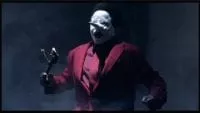“Black Lodge/White Lodge” is the occasional 25 Years Later version of the popular point/counterpoint style of debating, wherein two sides take opposing views and hash it out on stage. Here, we’ll be debating the finer points of Twin Peaks lore, in writing, for your reading pleasure.
Today’s debaters are: John Bernardy, Ali Sciarabba, Rob E. King, and Lindsay Stamhuis
The topic is: Which “chapter” of Twin Peaks is the best: Season 1, Season 2, The Return, or Fire Walk With Me?
Black Lodge: Lindsay Stamhuis
Season 1 is, in my opinion, the strongest and best “chapter” of Twin Peaks, hands down. Much like The Return was to the Summer of 2017, the original Twin Peaks‘ first season was a game-changer. No one here needs to be told that this was an innovative show. But it’s hard to remember sometimes just how innovative it truly was.
The television landscape in the 1989/1990 season consisted of fairly standard sitcom formulas like those found in The Cosby Show, Roseanne, and Cheers; heartfelt dramas like The Wonder Years and Dougie Howser, M.D. were up there too. The closest thing to a detective drama cracking the Top 30 was L.A. Law, Matlock, and Murder, She Wrote. Unless you were there (and many new fans weren’t) you can’t properly understand the effect a show like Twin Peaks would have had on the typical television audience. (Though perhaps if you can imagine the impact on your chest of three bowling balls dropped from the height of about nine feet, you might began to approximate the sensation…)
You think you’re tuning in for the FBI version of Jessica Fletcher (or, if you know David Lynch, maybe Jessica Fletcher but she works beside a brothel/daycare centre run by Dean Stockwell and a mute bearded lady) and instead you get dream sequences and dark comedy mixed with slapstick and the kind of supernatural horror that still keeps us all up at night. It would have been—it was!—an acid trip and a half.
It gave us one of the most perfect Pilot episodes in the history of television; it gave us a central mystery that still captivates and inspires legions of imitators to this day; it inspired clothing lines and literally changed the trending styles, bringing back red lipstick and saddle shoes at a time when grunge was the name of the game; and it kept us on the very edge of our seat from the opening shot right to the final frame of the cliffhanger-stuffed Season 1 finale (and took us into what I’m certain is still one of the trippiest dream sequences ever seen on network television). With the question “Who Killed Laura Palmer?” still on the lips of a global audience, additional ones filed in right behind: “What’s up with Ben Horne?” and “Will Nadine survive?” and “Who shot Agent Cooper?” and “Can you tie a cherry stem with your tongue?”
And, it gave us the brilliant introduction to the brilliant protagonist, the one who literally drove us into the heart of Twin Peaks the town and Twin Peaks the mythos: FBI Special Agent Dale Cooper (whose lunch—$6.31 at the Lamplighter Inn—adds up to the number of completion, mind you):
This is the season that started it all. It’s what brought us all together for all these long years. And it is the best part of Twin Peaks.
White Lodge: John Bernardy
I chose Season 2 as the most important, and best, “chapter” of Twin Peaks not just because of that finale, but every part of it. Stephen Spielberg wanted to direct the season opener but David Lynch wanted to take the reigns himself. He wanted to set the tone his way, in a way he didn’t get much chance to do in Season 1 because, in that, the pilot had already been completed for a long time and Mark Frost was basically steering Season 1 while Lynch was making Wild At Heart. Lynch’s episode that ended with that classic dream sequence was filmed at the end, after possibly EVERYTHING else had been wrapped. Lynch and Frost hadn’t worked closely together since the Pilot and Lynch wanted his show back. So he took it. And set that contemplative, even-more-interminably slow tone that’s now a trademark. And what were we meant to contemplate?
That the supernatural isn’t just a dream state, it’s part of Twin Peaks. That possession is a genuine possibility in Twin Peaks.

And more than that, there’s an overall season contemplation about Fear and Love as opposing forces that seem to be at the center of the worldview of the show. In Season 1 we have one of the best mystery shows ever. In Season 2 we have a show that contemplates philosophies and asks how we deal with what is inside us.
In Season 2, we first meet what Twin Peaks really is. We get the real Major Briggs, not the hard-nosed military man from Season 1 but the one involved in Project Bluebook and has the wherewithal to tell his wayward son about a vision where Bobby turns out well. We lose the in-the-thick-of-the-action side of Big Ed but we get that hilarious scene where he explains how Nadine lost her eye. And we get introduced to a central scene of my nightmares for years to come when BOB clobbers screaming Laura with that rock in the train car. And this is just the first episode.
Twin Peaks‘ first season intrigued me and creeped me. Season 2 hit me soul-level over and over again and it has literally haunted me ever since. Nothing will ever resonate in me like Twin Peaks, and once it started coming out on DVD I was able to notice how all the things that stuck with me, all the character traits I considered THE traits of the various people (aside from undercover Big Ed, and Cooper, who was consistently Cooper all the way through until the movie), the genuinely important mythology, all of it came from Season 2. This is even where we meet the Tremonds.
Sure, it meanders after one of the most shocking (not in the least of which that it was allowed to air at all) and powerful episodes of anything when the killer was revealed, but that’s what happens sometimes after tensions release. Lynch was heartbroken and both he and Frost were overcommitted so the series went astray for a while. I can’t argue that. But the last third of the season doubles down on the Theosophy and esoteric lore that creates a world under the surface you can’t get to but in dreams or when the stars align, and last time I checked this is exactly the lore (not the mystery plot threads from Season 1) that kept the show alive for the 26 years between the Season 2 finale and our unbelievable-that-it’s-real Season 3 debut.
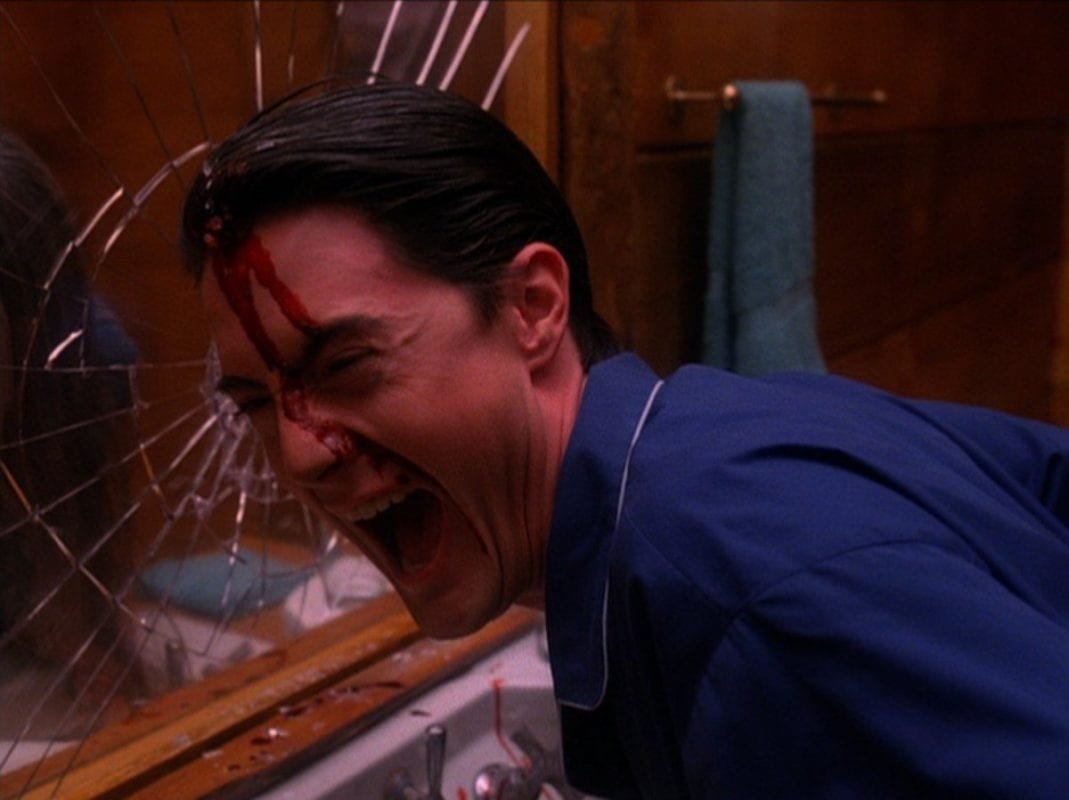
And when Lynch returned as director at the end (he already couldn’t leave its characters, returning earlier as Gordon Cole) we have the third instance of mind-blowing soul-level gorgeousness to occur within nine months, and a summation of the opposing Love and Fear themes threaded throughout. The season premier, Maddy’s farewell, and the end of the series alone (including the possession of Cooper that Lynch is on record not caring for, but was wise enough to stick to the script with) are also important enough to the fabric of Twin Peaks that whether or not you can forgive missteps like Little Nicky or Evelyn and Malcolm, Season 2 is a powerhouse.
And more importantly, Season 2 is the glue that guaranteed Twin Peaks‘ immortality rather than just staying fondly remembered only within its generation like Hill Street Blues or LA Law. And for that I’d toast a glass of sherry with Dick Tremayne every day of the year.
Red Room: Ali Sciarabba
The original Twin Peaks series, Fire Walk With Me, and The Return are all very different works but the one constant throughout is that Laura Palmer is at the heart of it all. The central question of Twin Peaks Seasons 1 and (part of) 2 was “Who Killed Laura Palmer?” There are many different interpretations of The Return, but at its core it was also always about Laura. Agent Cooper’s endgame was to find Laura and change her fate. Whether or not he succeeded will be debated for years to come, but the fact remains: “Laura is the one.”
Fire Walk With Me is Laura Palmer’s story and, for me, the strongest “chapter” of the Twin Peaks universe. We thought we knew Laura (and Leland) after the original series but Fire Walk With Me showed us that we had barely scratched the surface. It is a dark and heartbreaking look at the last days of the beautiful dead girl who started it all and it gives us crucial context for both the original series and The Return.
The first time I re-watched the original series after having seen FWWM, it made me feel the story more deeply. Of course, anytime you watch something for the second time you will take more away from it, but the fact that FWWM had given Laura a voice made the events of the original series incredibly powerful in a way that would have been impossible without the existence of FWWM. It allowed me to spend time with Laura, to feel the depths of her sadness and her fear. I knew Laura now—as much as anyone could ever truly know her—and after having seen the brutal and horrifying events that led up to her death, the image of her body, wrapped in plastic on the beach, was more powerful than I’d imagined it could be.
We can’t talk about Laura without talking about Leland, and what Fire Walk With Me does so successfully is to contextualize (and, in my opinion, criticize) the “Leland is possessed” ending to the central mystery of the original series. I’m in the “Leland Knew What He Was Doing” camp, largely because FWWM showed us that he had more knowledge of BOB’s sins than we were previously led to believe. The original series wanted to keep it a mystery and until the big reveal, we were never shown anything that would lead us to believe he was responsible.
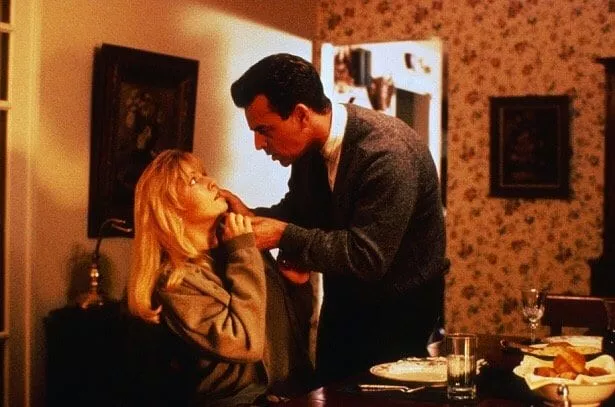
FWWM took that ending and forced us to explore the horrifying reality of Leland Palmer: rapist and murderer. This is not Leland Lite—weeping in his jail cell as he suddenly remembers everything. It is the real deal, and it is terrifying, and what makes it so much more effective is that it doesn’t ignore the BOB possession aspect of things. It enriches the supernatural aspect by showing that Leland is both a host to BOB while being on some level aware of what he’s doing. It shows that those that host BOB cannot retain their innocence. Sometimes BOB is in charge, and sometimes he’s just a passenger who allows his host to indulge in their darkest urges—the things that a non-BOBified person might think about doing but would never actually do.
Leland Palmer has a sexual relationship with Teresa Banks as Leland, not as BOB, and he comments on how much she looks like his daughter. He murders her because she’s threatened to expose him—the upstanding member of the Twin Peaks community, the perfect husband and father. It is debatable whether or not he would have killed her had he not been exposed to BOB’s evil, but FWWM shows us that Leland remembered what he did to Teresa. He is, definitively, not the little lost boy he was in the original series. This treatment of Leland finally gives Laura Palmer’s trauma the respect it deserves.
But Fire Walk With Me is more than just Laura’s story. It also introduces us to the convenience store, the Blue Rose, Chet Desmond, Phillip Jeffries—all essential elements of The Return. It has everything that I love about the Twin Peaks universe: classic Twin Peaks characters, Red Room weirdness, and Lodge mythology. [It also has the better Donna, but that’s a whole different debate.] Both the original series and The Return are stronger because Fire Walk With Me exists at the center, tying everything together.
Mauve Zone: Rob E. King
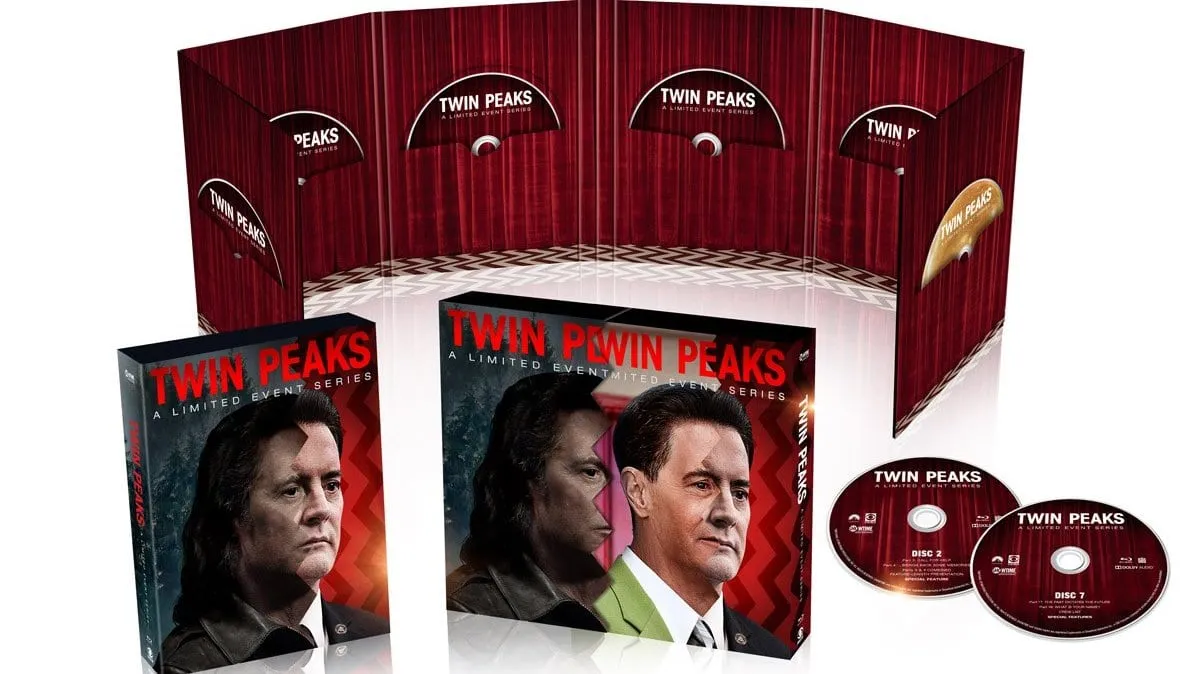
It is my position that Showtime’s Twin Peaks: A Limited Series Event is the strongest “chapter” in the complete narrative of Twin Peaks, chicken wire barrier secured (à la The Blues Brothers). It is a continuation that is itself manifest with its own history and narrative folding. Make no mistake, its strength does not negate its previous history. As it is not complete without its history, that history requires its future. Here is also a point to note: this is Twin Peaks completely written and executed by original creators Mark Frost and David Lynch from start to finish. It is a vision complete with its original cast in place and final cut in hand, which means everything to fans.
Yes, it is Twin Peaks aged, but the age is natural and integral. It is literally that gum you loved back in style. Still, Twin Peaks: The Return (as it is most often cited) refused its era of revival. A twenty-five year aging appeared in the international pilot dream sequence that began the entire narrative. While there is a warm nostalgia to the investigation into Laura Palmer’s murder in Seasons 1 & 2, a stygian and emotional allure in the investigation into Teresa Banks’s murder and Laura’s last days in Fire Walk With Me, The Return gives us the promise born of each—a look at these lives and those affected a quarter of a century later. The Return is the story of how the murder of Laura Palmer affected everyone who came into contact with its investigation. The pain that it caused continued to fester in the Palmer house, so much so that Cooper’s own spiritual journey will come full circle to deal with it. Given that, it is also the beginning for a new generation of viewers. For them, Cooper has always been in the lodge in need of returning to defeat his evil double. F.B.I. Director Gordon Cole and Special Agent Rosenfeld have always been looking for a missing agent in Dale. For them, Dr. Amp has always been a kook in a trailer in the middle of the woods espousing hippie-era paranoia via podcasts and video broadcasts. Deputy Chad’s reactions make a lot of sense. Why would anyone listen to this old lady holding a log? It is all contextual. For Twin Peaks fans who waited 25 years and struggled to get VHS copies or DVD sets, this works on the same level as Richard Linklatter’s The Before Trilogy. If you are not familiar, this trilogy began with characters Jesse (Ethan Hawke) and Céline (Julie Deply) meeting on a train in Europe, enjoying one night of impossible love before meeting again in a sequel nine years later, then in the finale of the trilogy nine years after that. As in both aged narratives, we learn that time is not always kind. The relationship between the two characters shows natural progression and aging as does Twin Peaks: The Return. That is to say this is a mature Twin Peaks. The Return reveals the power of the Owl Cave Ring introduced in Fire Walk With Me, advancing also the roles of the Lodge Denizens on a global scale that culminates in an origin story for the evil. Is there any doubt that Twin Peaks, its creators David Lynch and Mark Frost, achieved its pinnacle love letter to Laura Palmer any more than in Part 8?
Only weeks ago I attended a presentation for the Southwest Popular/American Culture Association by Mike Mills titled “David Lynch’s Twin Peaks: The Return as Auto-Retrospective.” In this presentation, author Mike Mills showed how much of David Lynch’s life works were incorporated into The Return as if it also functioned as a self-curated retrospective. I look forward to reading his further exploration of the topic in a paper. That said, I’m inclined to agree. The Return isn’t a most significant chapter because it is a signing-off for David Lynch’s career, but it is undeniably the most elaborate canvas for ideas seen throughout his oeuvre. If fans ever wanted to see Sailor and Lula on the Lost Highway to L.A. ruin just off Mulholland Drive, they nonetheless see a snakeskin patterned shirt under Booth’s black leather accoutrement driving back to Twin Peaks, intending no less than to broach the Palmer’s front door.
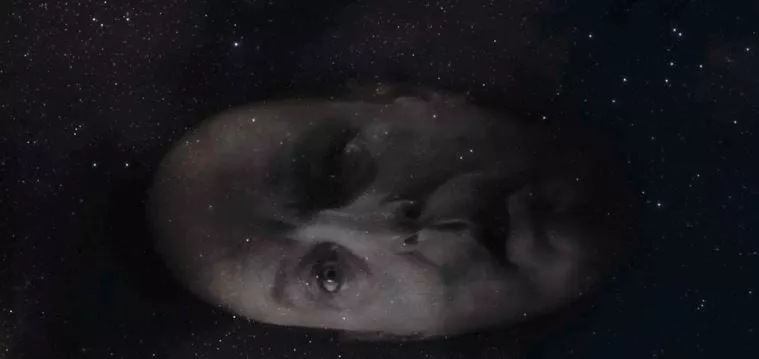
Then, there is true revelation in this portion of the narrative. We are forced to see that the intimate story emerging from Laura’s death was a product of a history that only Major Briggs truly saw through the correct lens. Once fans have seen The Return, they will now return to Twin Peaks in Major Briggs’s severed headspace. Diane will have a face, a family. Bobby will have a daughter, bringing his unsuspected training along with him. Bob reveals his promised death bag. They will look into the woods with Laura her final night and see Cooper lurking like an owl back at her. When fishing at night with Cooper, they will attend Briggs’s meeting with The Fireman, known only to Cooper as The Giant. Twin Peaks ages with its fans, never in effect more than it did for those coffee house teens in the early 90’s, who sat down May 21st, 2017, their hearing aids tuned in to the richest chapter of Twin Peaks, perhaps with a fine Bordeaux replacing their one-time cup o’ joe.
Do you have a topic for Black Lodge/White Lodge? Do you want to write it? We want YOU! Send an email to John and let us know your ideas and you could be featured in an upcoming Black Lodge/White Lodge debate!


